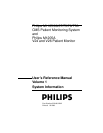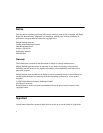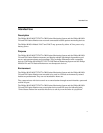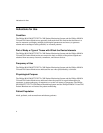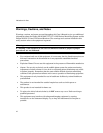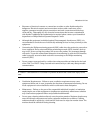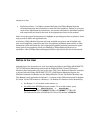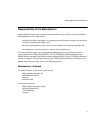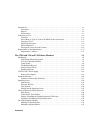
iv
Electromagnetic Interference
Anomalies due to electromagnetic interference are not unique to the M1165/66/67/75/76/77A
or the M1205A but are characteristic of patient monitors in use today. This performance is
due to the very sensitive high gain front end amplifiers used to display the physiological
signals. Among the many similarly performing patient monitors already in use by customers,
interference from electromagnetic sources is rarely a problem in actual use.
Avoiding Electromagnetic Interference
When electromagnetic interference (EMI) is encountered there are a number of actions that
can be taken to mitigate the problem.
• Eliminate the source. Possible sources of EMI can be turned off or moved away to
reduce their strength.
• Attenuate the coupling. If the coupling path is through the patient leads, the
interference may be reduced by moving and/or rearranging the leads. If the coupling is
through the power cord, plugging the patient monitor into a different circuit may help.
• Reduce the sensitivity of the system. In all of the EMC testing the patient monitor was
adjusted to maximum sensitivity. For the ECG amplifier the gain was four times what is
normally required. By reducing the gain of the system receiving the EMI, the
interference can often be eliminated.
• Add external attenuators. If EMI becomes an unusually difficult problem external
devices such as an isolation transformer or a transient suppressor may be of help. A
Philips Customer Engineer can be of help in determining the need for external devices.
Electromagnetic Compatibility (M1205A Only)
The electromagnetic compatibility (EMC) validation of the M1205A included testing
performed according to international standards for EMC with medical devices. See the
Manufacturer's Declaration for details.
EMC Testing. During the test program the M1205A was subjected to many EMC tests,
both international standard and Philips proprietary tests. There were no anomalies observed
during this testing.



